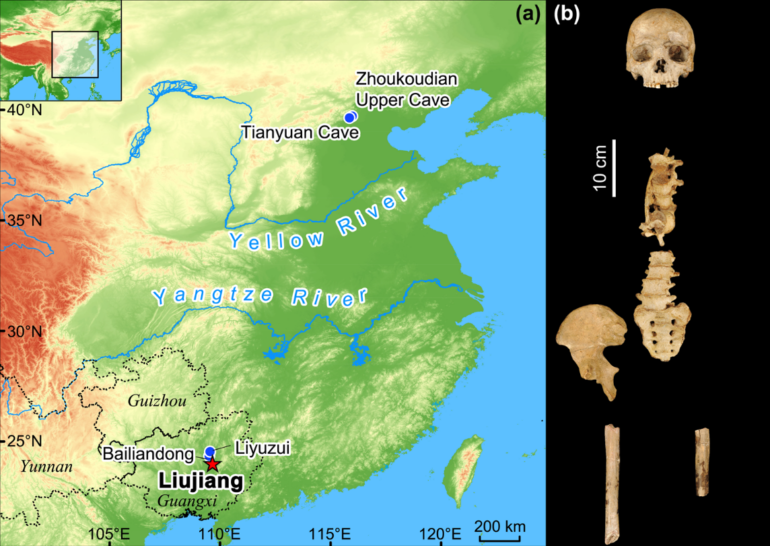The emergence of Homo sapiens in Eastern Asia has long been a subject of intense research interest, with the scarcity of well-preserved and dated human fossils posing significant challenges.
Tongtianyan cave, located in the Liujiang District of Liuzhou City, Southern China, has been a focal point of this research, housing one of the most significant fossil finds of Homo sapiens. However, the age of the fossils found within has been a matter of debate—until now.
In an international study, with contributions by Griffith University, researchers have provided new age estimates and revised provenance information for the Liujiang human fossils, shedding light on the presence of Homo sapiens in the region. The study, “New Late Pleistocene age for the Homo sapiens skeleton from Liujiang southern China,” has been published in Nature Communications.
Using advanced dating techniques including U-series dating on human fossils, and radiocarbon and optically stimulated luminescence dating on fossil-bearing sediments, the study revealed new ages ranging from approximately 33,000 to 23,000 years ago. Previously, studies had reported ages of up to 227,000 years of age for the skeleton.
“These revised age estimates align with dates from other human fossils in northern China, suggesting a geographically widespread presence of H. sapiens across Eastern Asia after 40,000 years ago,” said Professor Michael Petraglia, study co-author and Director of Griffith’s Australian Research Center for Human Evolution.
Dr. Junyi Ge, of the Chinese Academy of Sciences, and lead author of the study, said, “This finding holds significant implications for understanding human dispersals and adaptations in the region. It challenges previous interpretations and provides insights into the occupation history of China.”
The Liujiang skeletal remains, discovered in 1958, have long been considered among the most significant human fossils from Eastern Asia.
With their excellent preservation, the cranial, dental, and postcranial remains have been the subjects of extensive biological and morphological comparisons across Eurasia.
Dr. Qingfeng Shao, of the Nanjing Normal University added, “The findings of this study overturn earlier age estimates and palaeoanthropological interpretations, emphasizing the need for robust dating methods and proper provenance documentation in the study of human evolution.”
The study’s comprehensive dating analyses highlights the importance of accurate age estimates in advancing our understanding of modern human origins and dispersals.
More information:
Junyi Ge et al, New Late Pleistocene age for the Homo sapiens skeleton from Liujiang southern China, Nature Communications (2024). DOI: 10.1038/s41467-024-47787-3
Provided by
Griffith University
Citation:
Revised dating of the Liujiang skeleton renews understanding of human occupation of China (2024, May 1)



